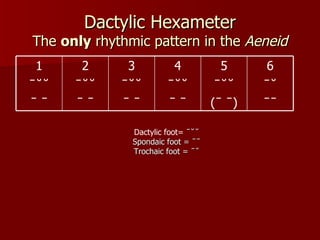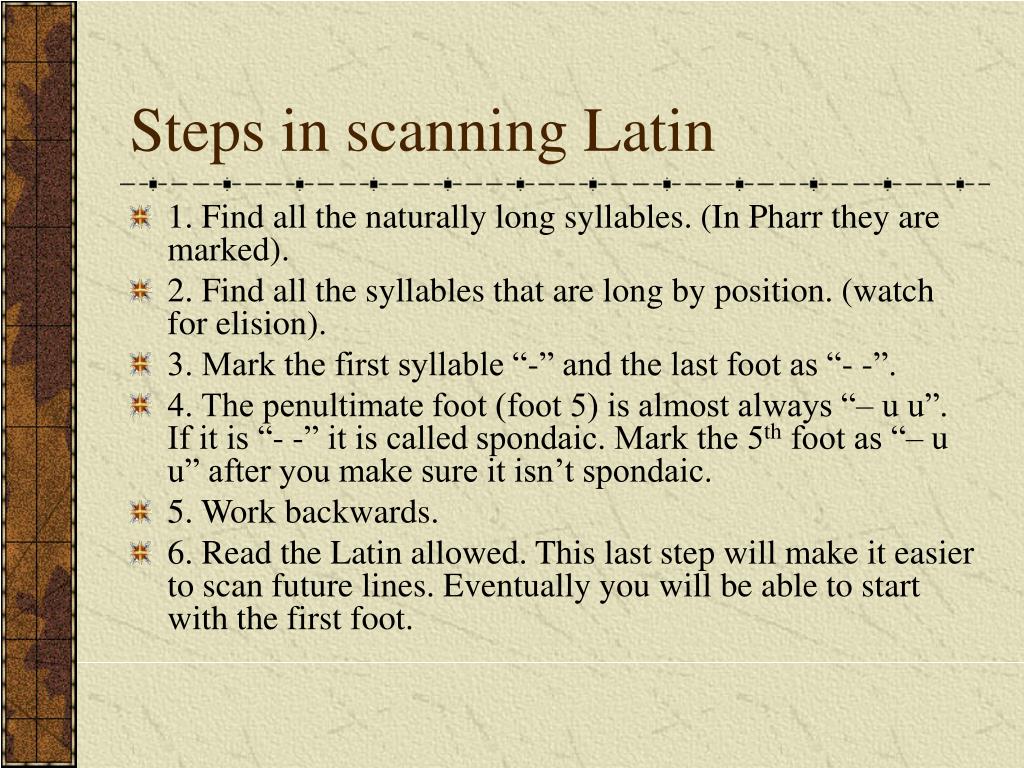
Dactyls in Tennyson’s “The Charge of the Light Brigade”

In each example, we’ve highlighted the stressed syllables in red and the unstressed syllables in green. It’s not surprising then that perhaps the most famous example of a poem written in dactylic meter is about a battle charge by soldiers on horseback: Alfred Lord Tennyson’s “The Charge of the Light Brigade.” Here are examples from that poem and a few others that use dactylic meter. The clunky rhythm of dactylic meter is sometimes compared to that of a horse galloping. So if you ever forget what dactyl means, let your fingers point you in the right direction. Just as a finger is composed of a long joint that extends from the base of your hand followed by two smaller joints, dactyls in poetic meter consist of a “long” (stressed) syllable followed by two “short” (unstressed) syllables. Quantitative verse occurs most often in classical Greek and Latin poetry and is almost impossible to write in English.Ī Trick for Remembering What Dactyl MeansĪ secondary meaning of dactyl is “finger” or “toe,” and the word itself derives from the Greek and Latin terms for the three joints that make up the finger. Dactyls in quantitative verse consist of three syllables in which the first is pronounced for a longer duration than the latter two. Here “length” refers to the time it takes to pronounce each syllable.

Dactyls in quantitative verse: Quantitative verse is poetry in which the meter derives from the length of syllables, not from stress.Dactyls in accentual verse consist of the stressed-unstressed-unstressed metrical pattern described so far. Metered verse in English is almost always accentual verse. Dactyls in accentual verse: Accentual verse is poetry in which the meter derives from the stress, or emphasis, placed on certain syllables.The term dactyl takes on a different meaning depending on the type of verse in which it’s used: accentual verse or quantitative verse. For example, dactylic pentameter is a type of meter that contains five dactyls per line (thus the prefix “penta,” which means five).Īccentual vs Quantitative Verse and Dactyls Poetic meters are named for both the type and number of feet they contain. Meter: A pattern of stressed and unstressed syllables that defines the rhythm of lines of poetry.Foot: In poetry, a " foot" refers to the rhythmic units that make up lines of meter.For instance, in the word “happily” the emphasis is on the first syllable (“hap”), so “hap” is the first “stressed” syllable and the other two syllables (“pi” and “ly”) are “unstressed.” Stress: In poetry, the term stress refers to the emphasis placed on certain syllables in words.
Latin dactylic hexameter scansion machine free#


We cover each of these in depth on their own respective pages, but below is a quick overview to help make understanding dactyls easier. In order to understand dactyls in more depth, it’s helpful to have a strong grasp of a few other literary terms about poetry.
Latin dactylic hexameter scansion machine how to#
Here's how to pronounce dactyl: dak-til Dactyls in Depth The opposite of a dactyl is an anapest, a metrical foot consisting of two unstressed syllables followed by a stressed syllable (such as in the word "un-der- stand").The Latin word for dactyl is dactylus, which itself has the stress pattern of a dactyl: dac-tyl-us.Dactyls were used to compose Greek epic poetry such as the Iliad or Odyssey.The other feet are: iambs, trochees, anapests, and spondees. Metrical patterns in poetry are called feet.Some additional key details about dactyls: The word “poetry” itself is a great example of a dactyl, with the stressed syllable falling on the “Po,” followed by the unstressed syllables “e” and “try”: Po-e-try. What is a dactyl? Here’s a quick and simple definition:Ī dactyl is a three-syllable metrical pattern in poetry in which a stressed syllable is followed by two unstressed syllables.


 0 kommentar(er)
0 kommentar(er)
